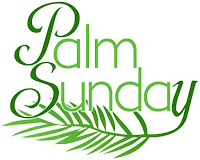 |
| Ramadan Mubarak the Islamic greeting during Ramadan |
Practices
There's more to Ramadan then just not eating or drinking anything while the sun is up. Islams are also expected to avoid unkind and impure thoughts and words, sex, smoking, and immoral behavior. Muslims see Ramadan as a time to practice self-restraint and self-reflection. Going to work, school, and tend to things they need to do is acceptable under the rules of Islam.
Only Muslims who have reached puberty and are in good health are expected to fast. Pregnant women, the elderly, and travelers are among the people exempt from fasting. They are expected to either make up for it at a later date, or help feed the poor instead of fasting. As to the reason for the fasting. It's meant to cleanse the soul and promote empathy for people who don't have enough to eat.
To keep Muslims from starving during Ramadan, the meal called "suhoor" is eaten before dawn, and "iftar" is eaten after sundown to break the fast. The foods at these two meals differs by culture.
To keep Muslims from starving during Ramadan, the meal called "suhoor" is eaten before dawn, and "iftar" is eaten after sundown to break the fast. The foods at these two meals differs by culture.
 |
| Eid Mubarak a Islamic greeting meaning Blessed Holiday |
Eid al-Fitr (or Eid ul-Fitr)
At the end of Ramadan, there is a major, three day celebration (Eid al-Fitr). Eid al-Fitr is also know as "The Festival of the Breaking of the Fast." When the Eid starts is determined by when the first sight of the new moon is seen. This means that the exact date it's celebrated can (and does) differ from country to country based on geographic location.
While the traditions during Eid differ among different cultures, prayers and a short sermon at the beginning of Eid is a culture spanning tradition. Other common traditions are, visiting friends and relatives, giving to charity, wearing either traditional clothes or a new outfit, and gifts for children.






































